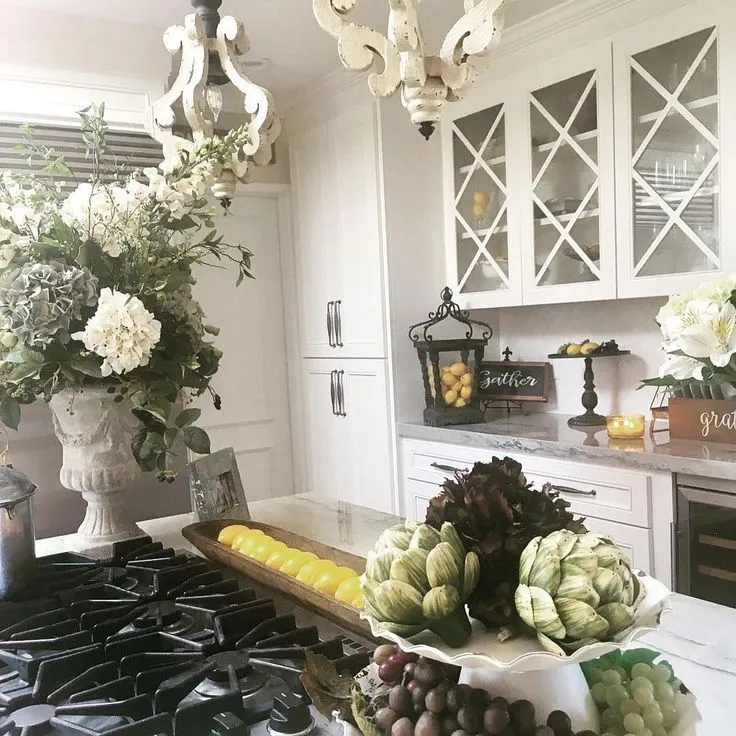The Allure of White Kitchens
White kitchens have long been a symbol of elegance, cleanliness, and timeless design. The enduring popularity of white kitchen decor stems from its ability to create a bright, airy, and inviting atmosphere. A well-designed white kitchen is more than just a space for cooking; it’s a central hub for family life, a place where memories are made, and where the simple act of preparing a meal feels special. The versatility of a white kitchen allows homeowners to experiment with different styles, from modern minimalist to classic farmhouse, ensuring that the space always feels fresh and relevant. This article will provide you with the tools and inspiration you need to create your own dream white kitchen.
Benefits of a White Kitchen
Choosing a white kitchen offers numerous advantages beyond its aesthetic appeal. Firstly, white kitchens often appear larger and more open, making them ideal for both small and spacious areas. White reflects light, which helps to brighten the space and create a sense of airiness. Moreover, white serves as a versatile backdrop for various design elements. It allows you to easily change the look of your kitchen by simply adding different accessories or incorporating pops of color. The clean aesthetic of a white kitchen also promotes a sense of calm and order, which can be particularly beneficial in a busy household.
Maximizing Natural Light
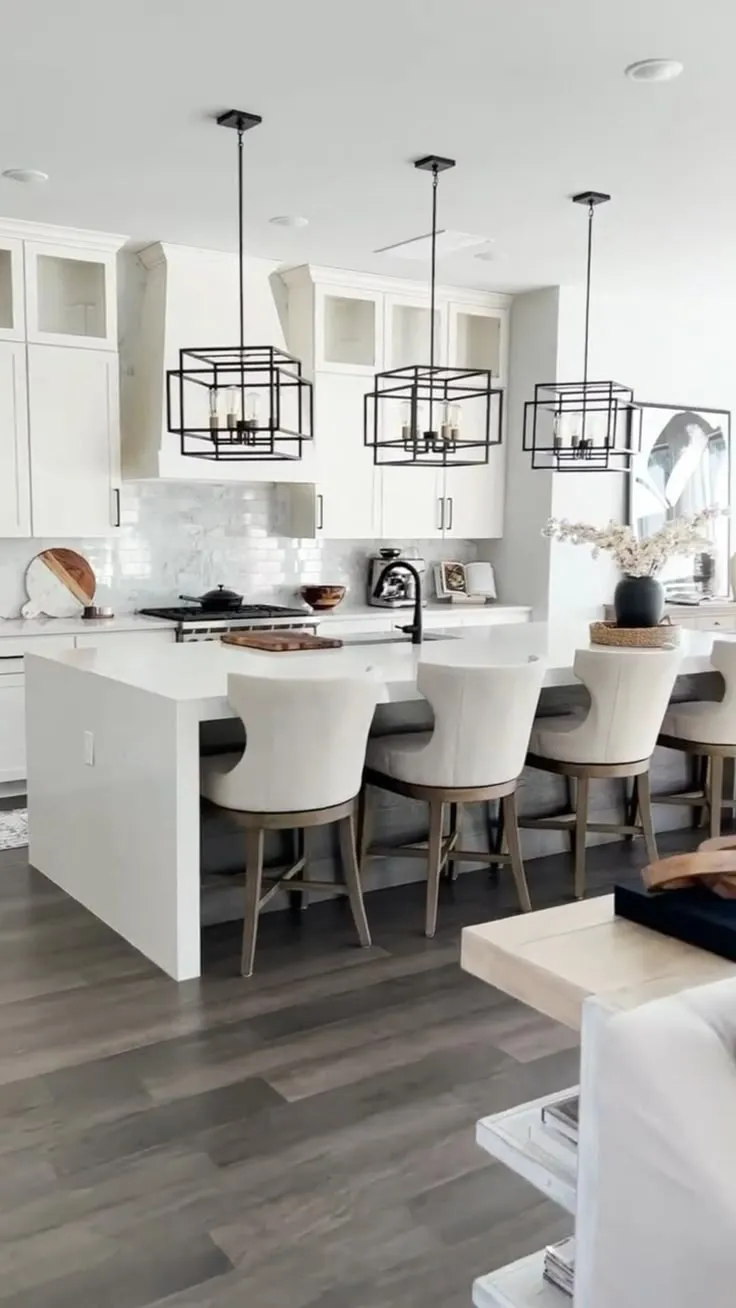
One of the most significant benefits of a white kitchen is its ability to maximize natural light. White surfaces reflect sunlight, amplifying the brightness and creating a welcoming ambiance. To fully capitalize on this, consider positioning your kitchen near windows or skylights. Furthermore, avoid heavy window treatments that can block sunlight. Instead, opt for sheer curtains, blinds, or no coverings at all. Strategic placement of mirrors can also bounce light around the room, enhancing the overall brightness. This approach not only improves the aesthetics of your kitchen but also reduces the need for artificial lighting during the day, saving energy and creating a more pleasant environment.
Creating Visual Space
White kitchens have the unique ability to make any space feel larger and more open, which is especially advantageous in smaller homes or apartments. The light-reflecting properties of white visually expand the boundaries of the room, eliminating the feeling of confinement. Using white on walls, cabinets, and even the ceiling creates a seamless flow, making it difficult to perceive where the room begins and ends. This visual trick is highly effective at creating the illusion of more space. Complementing the white with strategically placed mirrors can further enhance this effect, doubling the perceived size of the kitchen.
Versatility in Design
The versatility of white kitchens is one of their most appealing qualities. White acts as a neutral canvas, allowing for easy integration of various design styles and color schemes. Whether you’re aiming for a minimalist, modern look or a classic, rustic vibe, white serves as the perfect backdrop. You can easily change the overall feel of the kitchen by swapping out accessories, such as colorful appliances, artwork, or textiles. This adaptability is particularly useful for those who enjoy updating their home decor frequently, as white allows for seamless transitions between different styles without major renovations. This adaptability ensures your kitchen always feels current and reflects your evolving tastes.
Planning Your White Kitchen
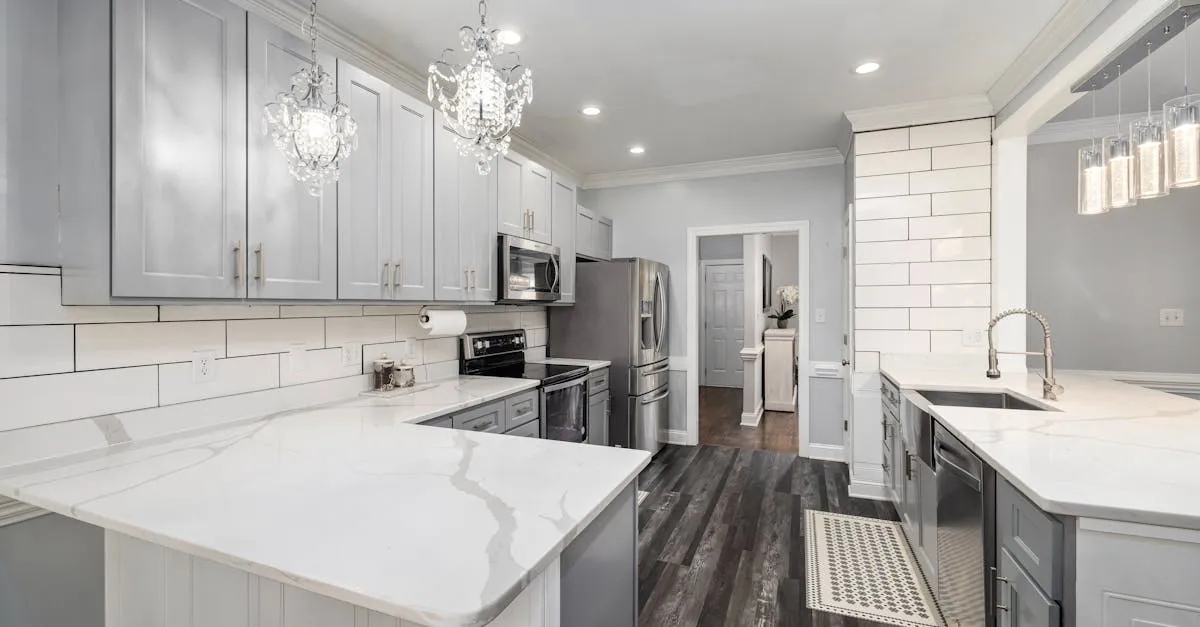
Planning a white kitchen requires careful consideration of various elements to ensure a cohesive and functional space. The key lies in selecting the right shades of white, choosing durable materials, and incorporating design features that enhance both aesthetics and practicality. Before you start, take the time to assess the existing space, considering its natural light, the overall layout, and your personal lifestyle. This will help you make informed decisions about paint colors, cabinetry, countertops, and other design elements. Careful planning will not only result in a beautiful kitchen but will also ensure it meets your daily needs and enhances your overall living experience.
Choosing the Right White
Choosing the right shade of white is crucial to achieving the desired look in your kitchen. With countless variations available, ranging from warm to cool tones, selecting the perfect white can be a challenge. The best approach involves considering the amount of natural light in your kitchen and the overall style you’re aiming for. Warm whites, with yellow or beige undertones, can create a cozy and inviting atmosphere, while cool whites, with blue or gray undertones, offer a clean and modern aesthetic. It’s advisable to test paint samples on your walls to see how the colors look at different times of the day. This will help you determine which white best complements your space and personal preferences.
Understanding Undertones
White paints possess subtle undertones that can dramatically impact the overall appearance of your kitchen. Understanding these undertones is essential for creating the desired ambiance. Common undertones include yellow, beige, gray, and blue. Yellow undertones provide warmth and create a welcoming environment, while beige undertones offer a softer, more traditional feel. Gray undertones give a modern, sophisticated look, and blue undertones lend a crisp, clean appearance. Pay attention to the undertones in relation to your other design elements, such as flooring, countertops, and accessories, to ensure they complement each other seamlessly.
Selecting White Paint Finishes
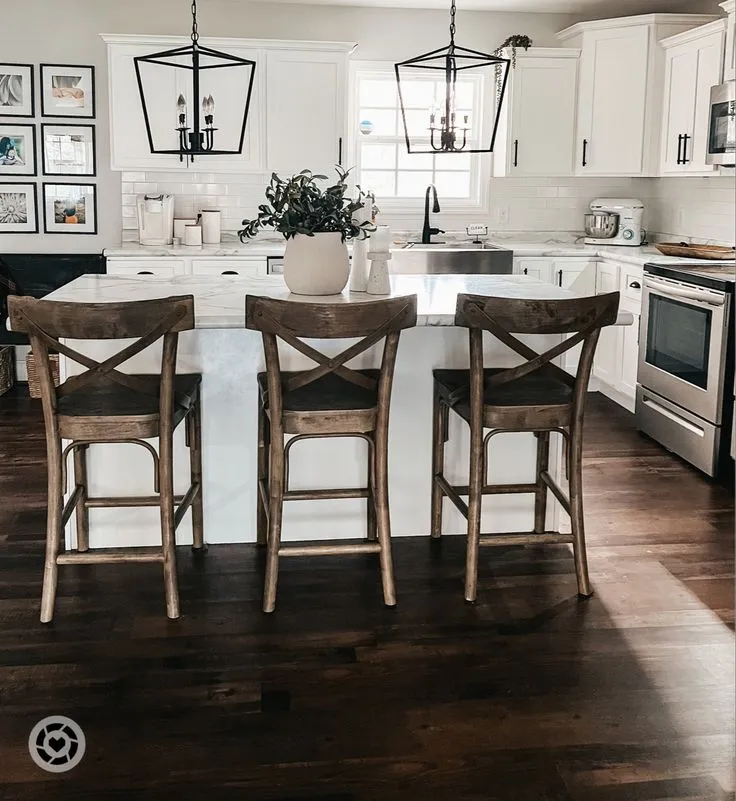
The finish of your white paint can significantly affect the overall look and feel of your kitchen. Common paint finishes include flat, matte, eggshell, satin, and semi-gloss. Flat finishes offer a non-reflective, velvety appearance, ideal for hiding imperfections, but are less durable and harder to clean. Matte finishes provide a slightly more washable surface than flat. Eggshell and satin finishes are more durable and easier to clean, making them suitable for high-traffic areas like kitchens. Semi-gloss finishes are highly reflective, durable, and easy to clean, perfect for cabinetry and trim. Consider the practical aspects of each finish, such as washability and durability, in relation to your lifestyle and the specific areas of your kitchen.
White Kitchen Cabinetry
White cabinetry forms the foundation of a stunning white kitchen, offering a blank canvas to build upon. The style, design, and finish of your cabinets will significantly influence the overall aesthetic of the space. Whether you opt for sleek, modern cabinets with clean lines or traditional, shaker-style cabinets with intricate detailing, the right choice can transform your kitchen. White cabinets not only brighten the room but also create a sense of spaciousness. The style of cabinetry should align with your personal taste and the overall design scheme of your home, whether it’s a contemporary minimalist look or a warm, inviting farmhouse style. White is the perfect base, ready to be complemented with countertops, backsplashes, and hardware.
Cabinet Styles and Designs
The style of your white kitchen cabinets plays a critical role in setting the tone of your kitchen. Shaker-style cabinets are a popular and versatile choice, featuring a flat-paneled door and a simple, clean design that complements a variety of styles. Modern or minimalist cabinets often boast flat-panel doors without any ornamentation, creating a sleek and contemporary look. Traditional cabinets might incorporate raised panels, decorative molding, and intricate details. Consider the architectural style of your home and your personal preferences when selecting cabinet styles. The choices should be influenced by the overall design you’re aiming for and the functionality you need in your kitchen.
Cabinet Hardware Selection
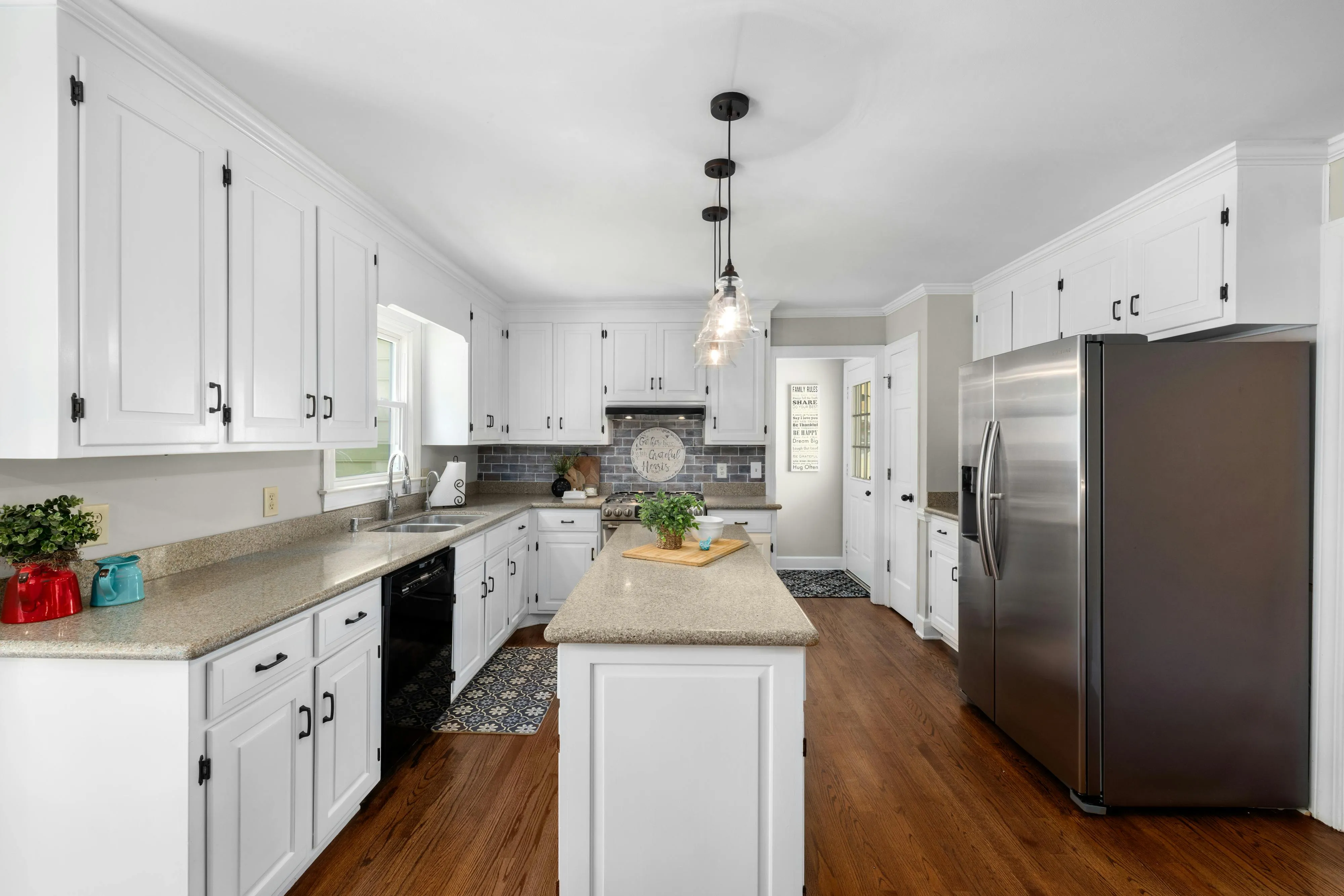
Cabinet hardware is a crucial detail that can significantly impact the overall look of your white kitchen. The hardware provides a finishing touch and adds both style and functionality to your cabinets. Consider the finish, shape, and style of the hardware in relation to your cabinet style and the overall design scheme. Popular choices include brushed nickel, polished chrome, matte black, and brass. Knobs and pulls are available in various shapes, sizes, and designs, from simple and streamlined to ornate and decorative. The hardware should complement the cabinetry, countertops, and backsplash, creating a cohesive and visually appealing space. Make sure to choose hardware that is durable and easy to grip.
White Kitchen Countertops
White countertops provide a sleek and sophisticated look to your kitchen. They serve as a focal point, enhancing the overall brightness and creating a visually appealing contrast with your cabinets and backsplash. Choosing the right countertop material is crucial, as it needs to be both stylish and functional. Consider durability, maintenance requirements, and how well the material complements your overall design scheme. White countertops come in a variety of materials, each offering its unique aesthetic appeal and practical benefits. From the classic elegance of marble to the resilience of quartz and the affordability of laminate, your countertop choice will significantly influence both the look and functionality of your kitchen.
Popular Countertop Materials
Several materials are popular for white kitchen countertops, each offering different benefits. Quartz countertops are known for their durability, non-porous nature, and ease of maintenance. They are available in a wide range of white shades and patterns. Marble countertops offer timeless elegance, with unique veining patterns that create a luxurious feel, though they require more maintenance due to their porous nature. Granite countertops are exceptionally durable and come in various shades of white with unique speckling. Solid surface materials, such as Corian, provide a seamless look and are highly versatile. The selection should be based on your lifestyle, budget, and aesthetic preferences, ensuring you choose a material that suits your needs and enhances your kitchen design.
Countertop Color Coordination
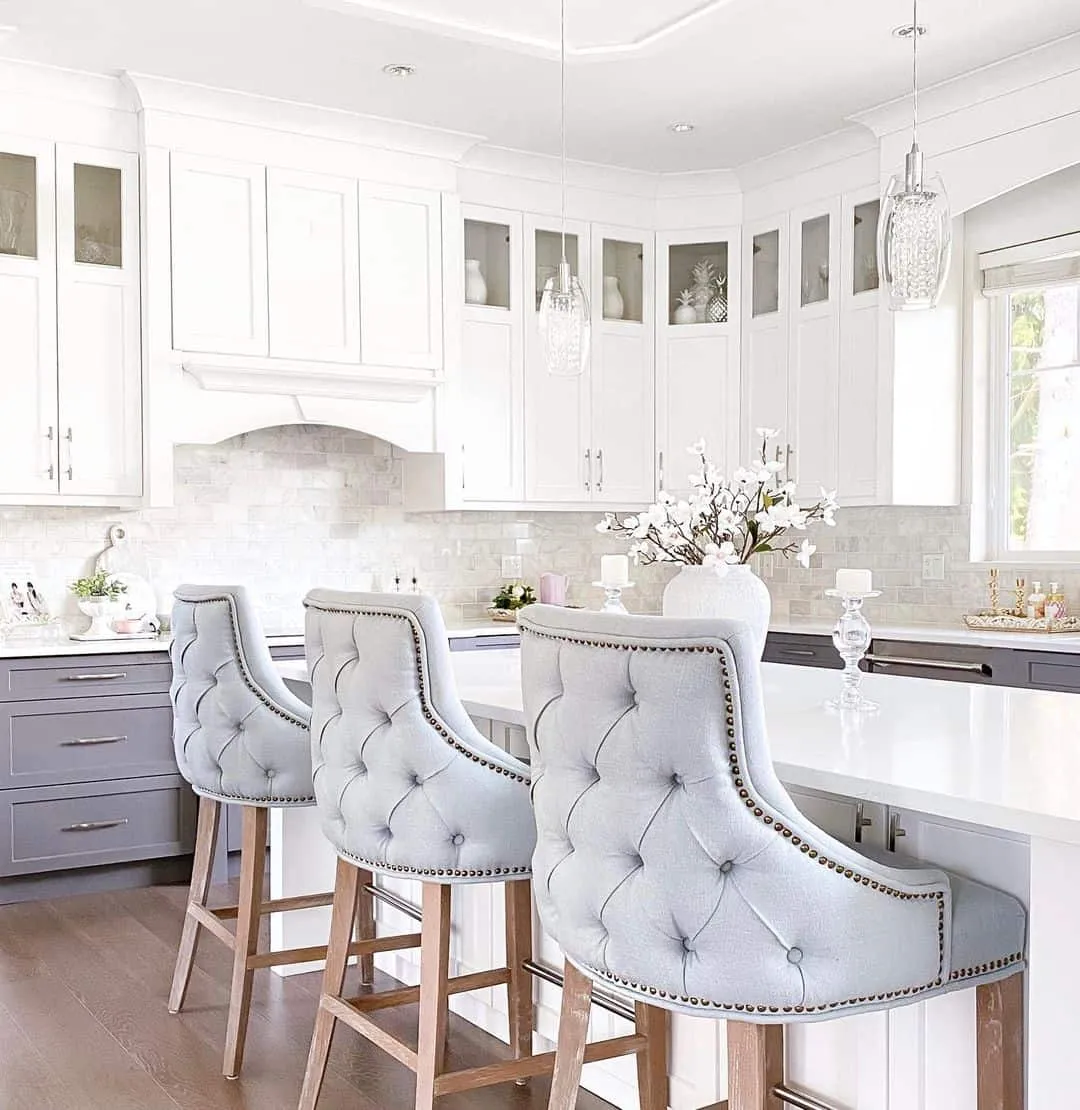
Coordinating your countertop color with the rest of your kitchen design is crucial for creating a cohesive look. When choosing white countertops, consider the undertones of your cabinets, backsplash, and flooring. If your cabinets have warm undertones, opt for a white countertop with subtle warmth to create a harmonious feel. For cooler-toned cabinets, choose a crisp white countertop to enhance the modern look. The veining or patterns on your countertop should also complement the overall design. Ensure the countertop complements your backsplash and flooring choices. This careful coordination helps to create a unified and visually appealing kitchen design.
White Kitchen Backsplash Ideas
The backsplash is a key design element in a white kitchen, tying together the overall aesthetic and adding a touch of personality. It protects your walls from splashes and spills while providing an opportunity to introduce texture, pattern, and color. The backsplash can range from understated and minimalist to bold and eye-catching. From classic subway tiles to intricate mosaic designs, the options are endless. Consider the existing design elements in your kitchen and choose a backsplash that complements your cabinets, countertops, and overall style. The right backsplash can enhance the visual appeal of your kitchen and create a focal point that adds depth and character.
Backsplash Materials
Backsplash materials vary greatly, each offering unique aesthetics and functionality. Subway tiles are a classic choice, providing a timeless look and easy maintenance. Glass tiles reflect light and add a touch of sparkle. Mosaic tiles create intricate patterns and can introduce color and texture. Natural stone, such as marble or granite, provides a luxurious feel, while porcelain and ceramic tiles offer a wide range of design options and durability. The choice of material should depend on your design preferences, budget, and how well it fits your kitchen’s functional needs. Make sure to consider cleaning requirements and the material’s resistance to stains and moisture.
Backsplash Design and Patterns
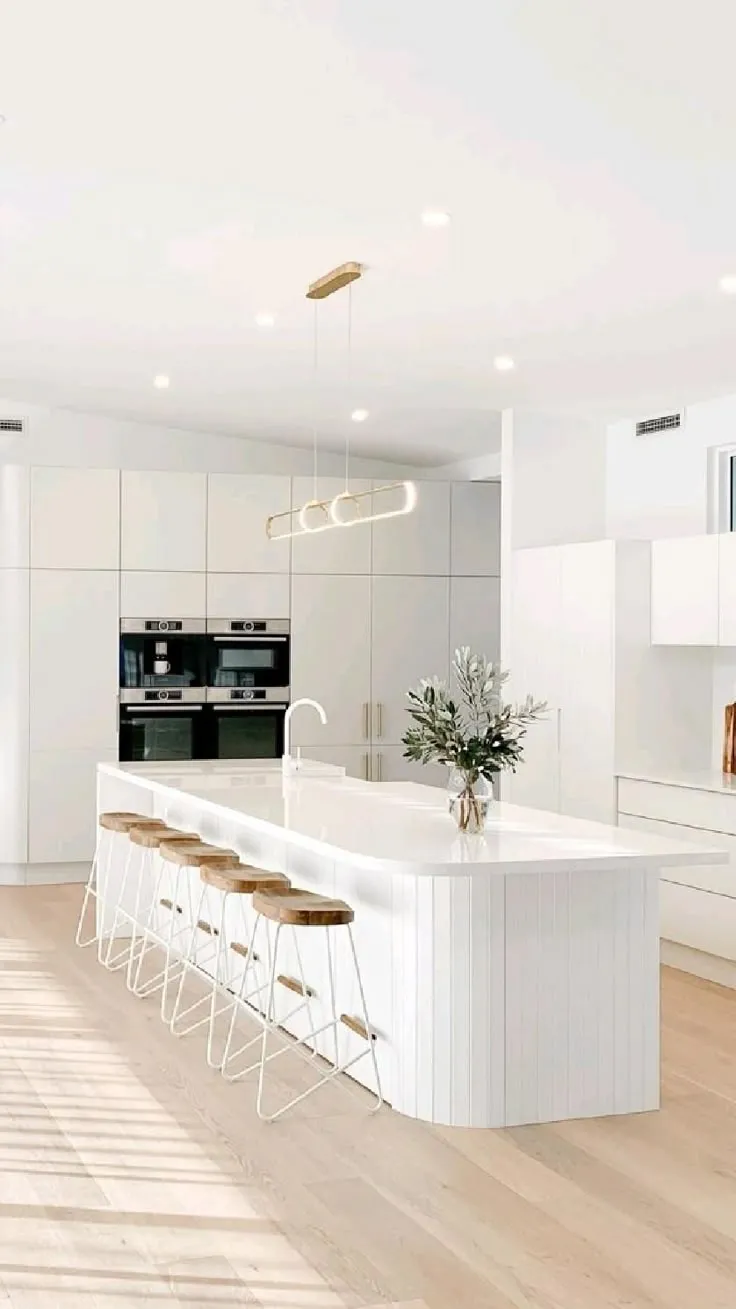
The design and pattern of your backsplash play a significant role in setting the tone of your kitchen. The simplest design involves using a single type of tile in a classic layout. Experiment with different patterns, such as herringbone, vertical stack, or diagonal layouts, to add visual interest. Consider the size and scale of the tiles and the overall design aesthetic you are aiming for. A patterned backsplash can serve as a focal point, while a more understated design allows other elements to shine. Ensure the design complements the rest of your kitchen decor and enhances the overall flow and visual appeal of the space.
White Kitchen Flooring Options
Flooring choices have a significant impact on the overall design and functionality of your white kitchen. The flooring should be durable, easy to clean, and capable of withstanding the demands of a high-traffic area. It should also complement the other design elements, such as your cabinets, countertops, and backsplash. White kitchen flooring can create a bright, airy feel. The choice will ultimately depend on your budget, lifestyle, and aesthetic preferences. Consider the maintenance required for each option, ensuring you choose a flooring material that meets your needs and enhances the visual appeal of your kitchen.
Flooring Materials
Several materials are suitable for white kitchen flooring, each with its advantages. Porcelain and ceramic tiles offer durability, water resistance, and a wide range of design options. Hardwood flooring adds warmth and natural beauty, but it requires more maintenance and is less resistant to moisture. Vinyl flooring is a cost-effective option that is water-resistant and easy to clean. Engineered wood combines the beauty of hardwood with added stability and durability. The best flooring material for your white kitchen depends on your lifestyle, budget, and aesthetic preferences. Ensure that the chosen material is durable and complements your overall design.
Flooring Color and Style
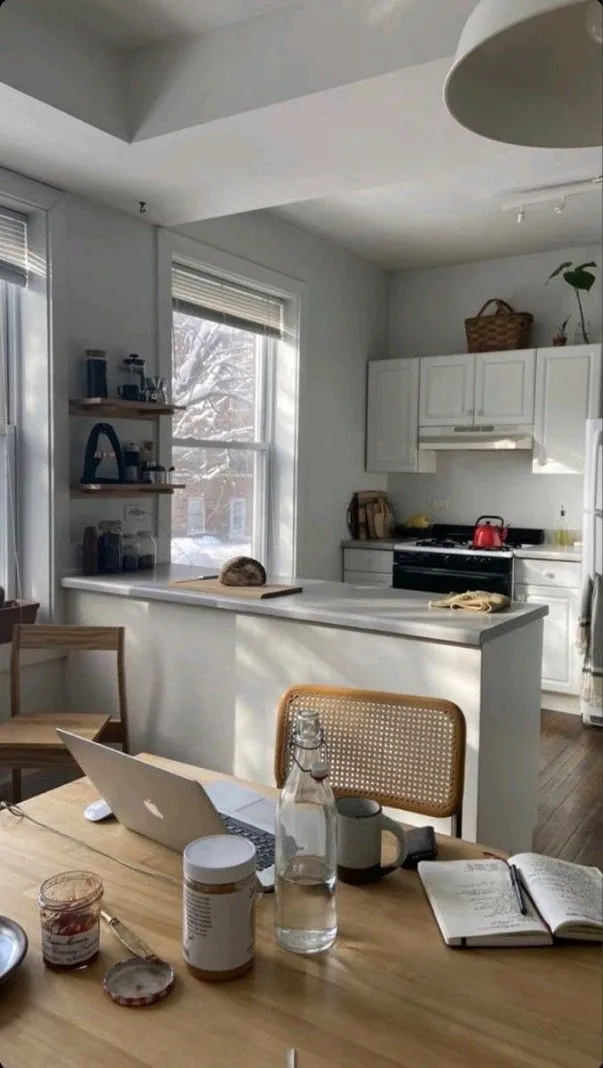
The color and style of your kitchen flooring greatly influence the overall look and feel of the space. Light-colored flooring, such as white or light-toned wood, can create a bright and airy atmosphere, making the kitchen feel larger. Darker flooring can add contrast and sophistication but may require more frequent cleaning. Consider the style of your cabinets, countertops, and backsplash when selecting flooring. Ensure the flooring complements these elements and enhances the overall design. The size and shape of the flooring tiles or planks can also influence the aesthetics, with larger formats often creating a more modern look. Make sure the flooring fits well with your white kitchen decor.
Adding Color and Texture to Your White Kitchen
While white kitchens provide a clean and minimalist base, adding color and texture is essential for creating a warm and inviting atmosphere. Carefully incorporating these elements can prevent the space from feeling sterile or uninspired. From the vibrant hues of kitchen accessories to the natural textures of wood accents, there are countless ways to add depth and character to your white kitchen. This approach helps to personalize the space and make it feel welcoming and reflective of your style and taste. By mixing these details thoughtfully, you’ll ensure your kitchen is not only beautiful but also a joyful place to spend time.
Incorporating Wood Accents
Wood accents bring warmth and natural beauty to a white kitchen. They provide a welcome contrast to the clean lines and bright surfaces of white. Incorporate wood elements through open shelving, butcher block countertops, wood flooring, or decorative accessories. The type and finish of the wood can also impact the overall look. Lighter wood tones create a Scandinavian vibe, while darker woods add richness and sophistication. Wood brings a sense of character and natural texture, making the space feel more inviting and comfortable. Strategically placed wood accents can add warmth and visual interest, transforming a sterile white kitchen into a cozy, stylish space.
Adding Colorful Accessories
Colorful accessories are an excellent way to inject personality and visual interest into your white kitchen. From vibrant kitchen gadgets to decorative bowls, colorful accents create pops of visual interest and prevent the space from feeling too monochromatic. Consider using a color palette that complements your overall design scheme. You can introduce color through items such as dish towels, artwork, or a set of colorful chairs. This approach not only adds personality but also allows you to easily update your kitchen’s look without major renovations. Playful accessories can transform a white kitchen and reflect your personal style.
Textural Elements
Textural elements add depth and dimension to a white kitchen, preventing it from feeling flat or one-dimensional. Mix textures through a variety of materials. Incorporate textured backsplashes, woven baskets, or textured countertops to create visual appeal. Consider using different materials, like brick, stone, or fabric, to create layers of visual interest. Combining matte and gloss finishes, along with varied patterns, can prevent the space from feeling one-note. These carefully chosen details can make a white kitchen feel much more dynamic and visually interesting. Varying the textures will give the space depth and a sophisticated feel.
Lighting Your White Kitchen
Proper lighting is crucial in any kitchen, but it is especially important in white kitchens to ensure that the space is bright and functional. The right lighting scheme can enhance the beauty of white surfaces. It can also create a warm and inviting atmosphere. Effective lighting involves layering different types of light sources to meet various needs, from task lighting for food preparation to ambient lighting for general illumination and accent lighting to highlight specific features. By using a combination of these lighting strategies, you can transform a white kitchen into a well-lit and welcoming space.
Layering Your Lighting
Layering your lighting involves using different types of light sources to create a balanced and functional lighting scheme. Task lighting, such as under-cabinet lights and pendant lights over the island, provides focused illumination for specific tasks like cooking and food preparation. Ambient lighting, often provided by recessed lights or a central overhead fixture, offers general illumination for the entire space. Accent lighting, such as track lights or spotlights, can highlight architectural features or decorative elements. Layering these light sources ensures that your kitchen is well-lit for all activities. This design gives you control over both the brightness and the feel of your space.
Choosing the Right Light Fixtures
Choosing the right light fixtures is essential for both functionality and aesthetics. Consider the overall style of your kitchen when selecting light fixtures. For a modern look, choose sleek and minimalist designs. For a traditional feel, opt for ornate chandeliers or pendant lights. Consider the type of light bulbs you use. LED bulbs are energy-efficient and provide excellent illumination. The placement of fixtures is also important. Pendant lights above an island create a focal point, while under-cabinet lights illuminate countertops. The combination of the right fixtures and strategically placed lights will ensure that your white kitchen is both beautiful and well-lit.
Maintaining Your White Kitchen
Maintaining a white kitchen involves regular cleaning and care to keep it looking its best. White surfaces can be more prone to showing dirt, stains, and scratches, so it’s essential to establish a cleaning routine. Regularly wipe down countertops, cabinets, and backsplashes to prevent stains from setting in. Clean up spills immediately. Use appropriate cleaning products for different surfaces, such as non-abrasive cleaners for countertops and mild soap for cabinets. Consider the materials in your kitchen. Implement these care practices to maintain the cleanliness and visual appeal of your white kitchen. This will allow you to enjoy the beauty of your kitchen.
In conclusion, creating a dream white kitchen involves careful planning, thoughtful design choices, and a commitment to maintenance. By understanding the benefits of a white kitchen, planning your design, and incorporating color, texture, and lighting, you can transform your kitchen into a bright, inviting, and functional space that you’ll love for years to come. Embrace the versatility of white and let your creativity shine in designing your dream kitchen. By following these guidelines, you can create a timeless kitchen that meets your needs and reflects your personal style.
